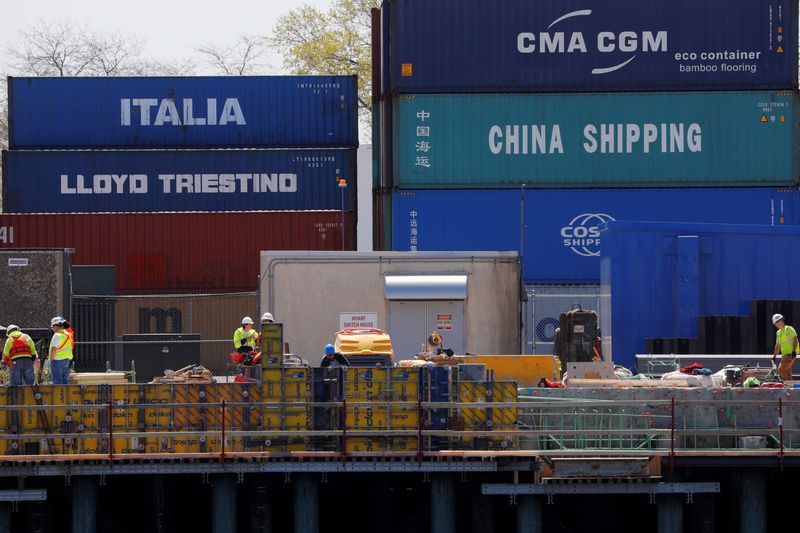WASHINGTON (Reuters) - The U.S. trade deficit widened more than expected in February as exports of goods declined, suggesting that trade could drag on economic growth in the first quarter.
The trade deficit increased 2.7% to $70.5 billion, the Commerce Department said on Wednesday. Data for January was revised to show the trade gap widening to $68.7 billion instead of $68.3 billion as previously reported. Economists polled by Reuters had forecast the trade deficit rising to $69 billion.
Exports fell 2.7% to $251.2 billion, likely reflect slowing global demand as well as the U.S. dollar's past appreciation, which is making U.S.-made goods less competitive on international markets.
Goods exports plunged 4.8% to $169.2 billion, weighed down by declines in natural gas and nonmonetary gold. Exports of motor vehicles, parts and engines fell $1.9 billion, while those of consumer goods decreased $1.4 billion. There were also decreases in exports of capital goods. But exports of services increased $1.7 billion to $82.0 billion, boosted by travel.
Imports fell 1.5% to $321.7 billion, with goods declining 2.2% to $262.2 billion. Domestic demand is slowing amid higher borrowing costs aimed at taming inflation, which has seen businesses less enthusiastic about boosting inventory of goods.

Consumer goods imports fell $3.7 billion, mostly reflecting decreases in cell phones and other household goods, pharmaceutical preparations as well as cotton apparel and household goods. Imports of motor vehicles, parts and engines fell $2.9 billion. But imports of services increased $0.8 billion to $59.5 billion, lifted by transport.
Adjusting for inflation, the goods trade deficit widened 2.7% to $104.6 billion. A smaller trade deficit was one of the contributors to the economy's 2.6% annualized growth rate in the fourth quarter. As of Wednesday morning, the Atlanta Federal Reserve was forecasting first-quarter gross domestic product increasing at a 1.7% pace.